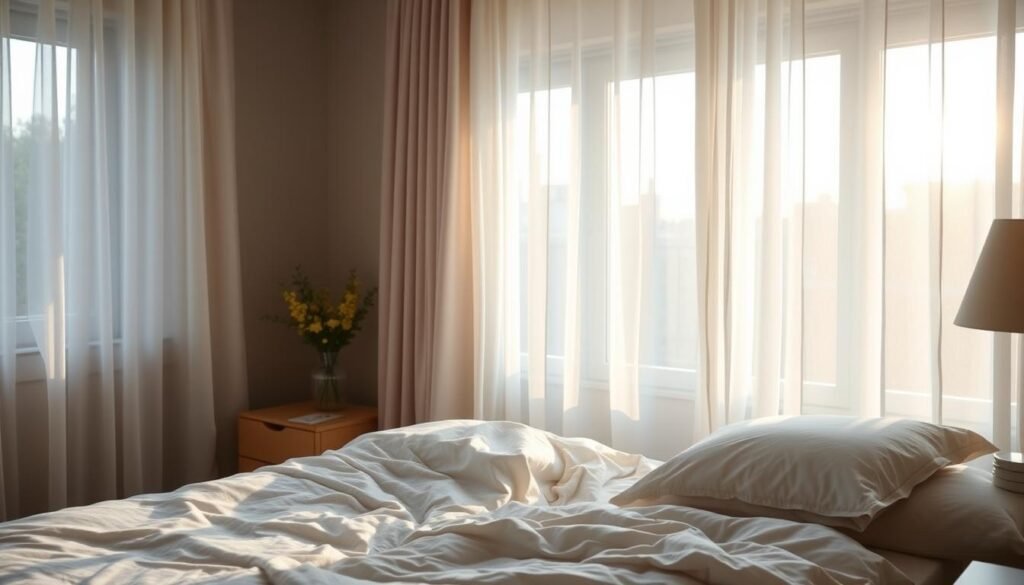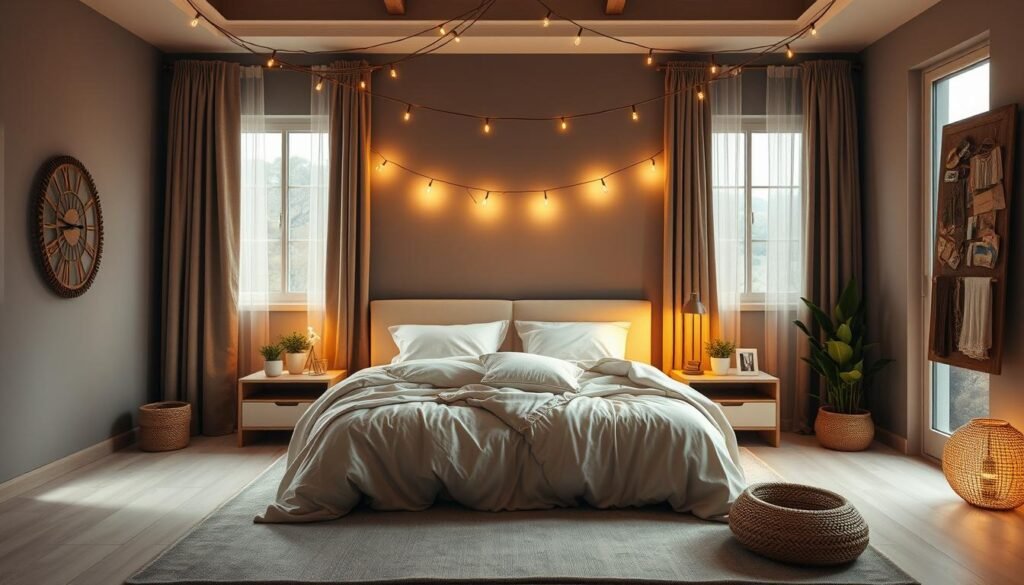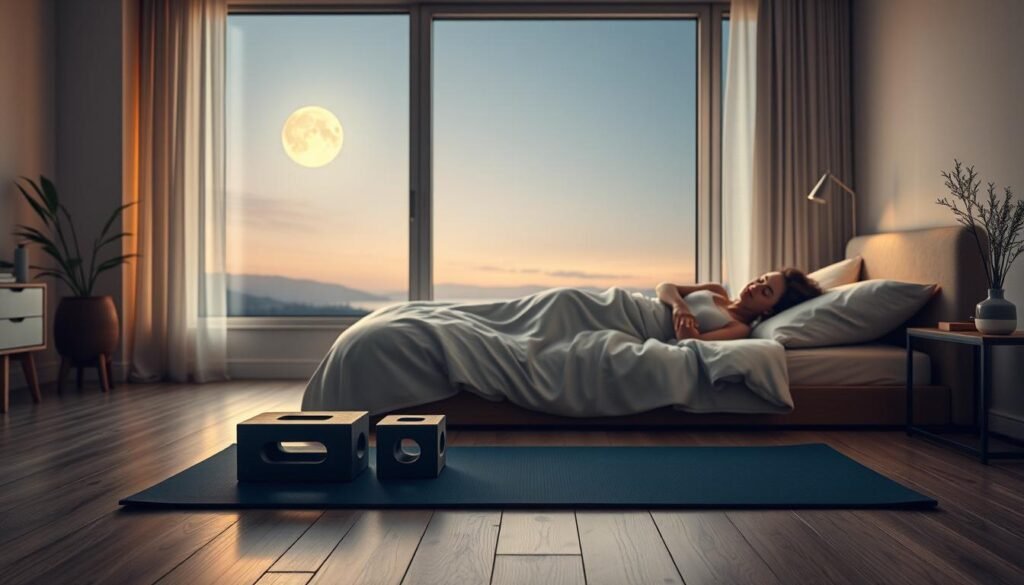Did you know that poor rest patterns can harm your health as much as a bad diet or lack of exercise? Many people overlook the power of deep, restorative rest, yet it plays a vital role in energy, focus, and overall wellness.
Modern life brings challenges like screen time and erratic schedules, making it harder to unwind. However, science-backed methods can help you achieve better sleep without drastic changes. From adjusting your nighttime routine to optimizing your environment, small shifts make a big difference.
This guide explores 15 proven strategies to improve sleep naturally. You’ll learn how consistent habits, backed by FDA recommendations and peer-reviewed studies, support long-term well-being and even disease prevention.
Key Takeaways
- Rest impacts overall health as much as diet and exercise.
- Modern habits like excessive screen use disrupt natural rhythms.
- Small, consistent changes can lead to deeper rest.
- Evidence-based methods align with FDA guidelines.
- Quality rest helps prevent long-term health issues.
Why Sleep Quality Matters for Your Health
Chronic insomnia and fragmented rest silently undermine heart health, weight management, and immunity. Your circadian rhythm—the body’s internal clock—orchestrates hormone release, including cortisol for energy and melatonin for rest. Disrupting this cycle, like late caffeine intake, can skew these balances.
A 2023 study found that consuming caffeine six hours before bed cuts rest efficiency by 45%, shortening sleep by 45 minutes. This deficit accumulates, raising risks for diabetes and obesity due to impaired glucose processing. Fragmented rest also weakens leptin (satiety hormone) production, fueling cravings.
Sleep apnea, affecting 33.9% of men and 17.4% of women, further fragments rest by interrupting breathing. Left untreated, it strains cardiovascular health. Meanwhile, 10% of adults battle chronic sleep problems, per 2020 data, with lasting impacts on mental resilience.
Prioritizing good night sleep isn’t just about feeling refreshed—it’s preventive care. Consistent, deep rest helps regulate the systems that cause sleep problems when neglected.
15 Evidence-Based Tips for Improving Sleep Quality
Light exposure and caffeine timing are often overlooked levers for deeper rest. Research shows these daily habits significantly impact hormone balance and circadian alignment. Below, science-backed methods to harness their power.

1. Prioritize Bright Light During the Day
Morning sunlight resets your internal clock. A 2022 study found 18% better rest quality in participants who got 15+ minutes of daylight daily. Cloudy skies? Extend exposure to 30 minutes.
Office workers in a 2017 trial reported fewer nighttime awakenings after using light therapy lamps. Aim for light exposure within 2 hours of waking for optimal melatonin regulation later.
2. Diminish Blue Light at Night
Screens emit blue wavelengths that suppress melatonin. This hormone, crucial for sleep onset, drops by 23% after 2 hours of evening device use. Reduce brightness or use amber filters 90 minutes before bedtime.
3. Cut Caffeine Early
The FDA notes caffeine’s half-life averages 5 hours. An espresso at 3 PM leaves 25% of its stimulants circulating by 11 PM. Stick to a strict 8-hour cutoff before bed—drip coffee affects individuals longer than tea.
For those using melatonin supplements, the FDA recommends 0.1–10 mg doses. Higher amounts can disrupt natural production, worsening dependency.
Optimize Your Sleep Schedule
Your body thrives on predictability, especially when it comes to rest. A 2020 review of 41 studies confirmed irregular patterns reduce deep sleep by 30%. Aligning with your circadian rhythm—ideally between 11 PM and 7 AM—boosts melatonin production and daytime alertness.
Keep a Consistent Sleep-Wake Time
Shift your sleep routine gradually if needed. Going bed late on weekends creates “social jetlag,” a mismatch that worsens Monday fatigue. Research shows even a 90-minute shift delays melatonin release by 40 minutes.
Travelers can adjust by exposing themselves to local light times immediately. For every time zone crossed, spend 15 minutes outdoors at dawn or dusk to reset your clock.
Limit Daytime Naps
Short naps (20 minutes) enhance focus without grogginess. A 2021 athlete study found naps under 45 minutes improved recovery without affecting nighttime rest. Longer naps, however, reduce deep hours bed later.
If you nap, do it before 3 PM. Late-day naps confuse your internal clock, making going bed harder. Set an alarm to avoid slipping into deep sleep cycles.
Create a Sleep-Inducing Bedroom Environment
Your bedroom setup plays a bigger role in rest than most realize. A 2024 study found that optimizing your environment—from bedding to ambient conditions—can cut nighttime awakenings by 37%. The right choices signal your brain it’s time to unwind.

Invest in a Comfortable Mattress and Bedding
Memory foam molds to your body, reducing pressure points by 25% compared to traditional springs. Hybrid mattresses blend support and airflow, ideal for hot sleepers. For bedding, wool wicks moisture in summer, while linen’s breathability suits warmer climates.
Goose down comforters excel in insulation without weight. A 2024 review noted their ability to regulate temperature year-round. Make sure your mattress aligns with your sleep position—firmer for stomach sleepers, softer for side sleepers.
Control Room Temperature and Noise
Keep your room at 68°F for optimal rest. Temperatures above 75°F disrupt deep sleep cycles. Use blackout curtains to block light and a white noise machine if noise exceeds 30 dB (ideal for light sleepers). City dwellers may tolerate up to 50 dB.
HEPA filters reduce allergens like dust mites, which trigger 42% of nighttime congestion cases. Pair this with humidity control (40–60%) to prevent dry airways.
Diet and Sleep: What to Avoid
Late-night meals and alcohol disrupt more than just digestion—they sabotage deep sleep. Research shows high-carb dinners delay REM onset by 40 minutes, while alcohol fragments rest cycles. Small adjustments to your evening routine can preserve restorative rest.
Don’t Eat Late at Night
Eating within 3 hours of bed strains digestion, raising body temperature when it should drop. A 2021 study found participants who ate high-glycemic snacks close bedtime took longer to reach deep sleep. Opt for tryptophan-rich foods like turkey or nuts if hungry.
Establish a fasting window to align with circadian rhythms. Light, protein-heavy snacks (e.g., Greek yogurt) are better than sugary treats. Processed carbs spike blood sugar, triggering wakefulness during the night.
Limit Alcohol Before Bed
While alcohol may induce drowsiness, it suppresses REM sleep—the phase critical for memory and mood. The liver processes one drink per hour; two glasses of wine at 9 PM mean metabolizing until midnight. This disrupts the second half of your rest cycle.
For better rest, avoid alcohol within 4 hours of bed. Hydrate with herbal tea instead. If consuming, pair with water to mitigate dehydration, which worsens snoring and congestion.
Wind-Down Rituals for Better Sleep
Evening routines directly influence how quickly your body shifts into rest mode. Structured relaxation practices signal your nervous system to unwind, easing the transition from wakefulness to deep recovery.

Practice Relaxation Techniques
The 4-7-8 breathing method slows your heart rate: inhale for 4 seconds, hold for 7, exhale for 8. Repeat four times. Navy SEALs use box breathing (equal inhale-hold-exhale-hold counts) to combat stress.
Progressive muscle relaxation tightens and releases each body part, starting from toes. A UC Davis study found this reduces nighttime awakenings by 29% after six weeks.
Try Meditation or Mindfulness
Guided sessions on apps like Insight Timer train your mind to detach from racing thoughts. Research shows 10 minutes of meditation before bed improves sleep onset by 40%.
Journaling worrisome thoughts “empties” your mental cache. Try prompts like:
– “What felt unresolved today?”
– “What can I release control over tonight?”
This aligns with CBT-I protocols to break cycles of nighttime rumination.
Supplements That May Improve Sleep
Natural compounds like melatonin and magnesium influence circadian rhythms. While not a cure-all, these supplements can address deficiencies that disrupt rest. Always consult a healthcare provider, especially if taking medications.
Melatonin: Dosage and Safety
The FDA recommends 0.1–10 mg doses for short-term use. Sublingual tablets absorb faster than pills, ideal for jet lag. Avoid doses above 5 mg—it can delay natural production.
NSF-certified brands like Nature Made ensure purity. A 2023 review linked prolonged high-dose use to grogginess. Pair with dim lights for optimal effect.
Magnesium and Other Natural Aids
Magnesium glycinate is gentler on digestion than citrate. Studies show 200–400 mg nightly reduces muscle tension. Top NSF picks include Pure Encapsulations.
L-theanine (100–200 mg) from green tea promotes calmness. Valerian root may shorten rest onset but lacks long-term safety data. Avoid kava—linked to liver damage in FDA reports.
Exercise and Sleep: Timing Matters
Physical activity plays a key role in rest quality, but timing affects its benefits. The American College of Sports Medicine (ACSM) notes that aligning workouts with your circadian rhythm optimizes recovery. Morning and evening exercise each have unique impacts on hormone levels and rest depth.

Morning vs. Evening Workouts
Early risers benefit from natural cortisol spikes, which peak around 8 AM. A 30-minute jog during this time leverages elevated energy. However, high-intensity interval training (HIIT) after 7 PM delays melatonin release by 90 minutes. Make sure to finish intense sessions 3+ hours before bed.
Yoga nidra, a guided relaxation practice, helps post-workout recovery. Studies show 20 minutes reduces muscle tension and speeds up rest onset. Pair it with light stretching to signal your body to wind down.
Aerobic workouts like cycling improve deep rest more than resistance training. Evening lifters should prioritize cool-downs: 10 minutes of slow movements lowers heart rate faster. This prepares your system for uninterrupted rest cycles.
When to Seek Professional Help
Persistent nighttime struggles may signal deeper health concerns. If lifestyle changes don’t resolve frequent awakenings or daytime fatigue, a specialist can identify underlying sleep problems.
Signs of Sleep Disorders
These red flags warrant evaluation:
- Choking episodes or gasping for air (common in sleep apnea).
- Limb jerking that disrupts hours bed (restless leg syndrome).
- Daytime drowsiness despite 7+ hours of rest.
The STOP-BANG questionnaire screens for apnea risk factors like snoring or high blood pressure. A score ≥3 suggests further testing.
Clinics use the multiple sleep latency test (MSLT) to measure how quickly you nap under controlled conditions. Results under 8 minutes indicate excessive sleepiness.
For insomnia, cognitive behavioral therapy (CBT-I) is the gold standard. It targets thoughts and habits that cause sleep problems, with 70% success rates in clinical trials.
CPAP machines maintain airway pressure for apnea patients, while oral appliances reposition the jaw. The American Academy of Sleep Medicine (AASM) provides accredited center listings for tailored care.
Conclusion
Building lasting habits takes consistency—stick to changes for at least three days to see initial results. Pairing 150 minutes of weekly movement with a structured sleep routine reinforces natural rhythms.
Track progress with devices like the Oura Ring or Whoop, which monitor deep rest stages. For a unique approach, sync your schedule with moon phases for 30 days—many report calmer nights during waning cycles.
Sunrise alarm clocks mimic dawn, easing wake-ups without jolting your system. Small, deliberate adjustments compound over time, leading to a good night sleep and lasting health benefits.
Remember, rest isn’t just downtime—it’s active recovery. Prioritize it as you would nutrition or fitness, and your body will thank you.
FAQ
How does light exposure affect sleep?
Bright light during the day helps regulate your circadian rhythm, while blue light from screens at night can disrupt melatonin production, making it harder to fall asleep.
Is caffeine harmful before bedtime?
Yes, caffeine stays in your system for hours. Consuming it late in the day can delay sleep onset and reduce overall restfulness.
Why is a consistent sleep schedule important?
Going to bed and waking at the same time daily reinforces your body’s internal clock, leading to deeper, more restorative rest.
Can napping during the day impact nighttime sleep?
Long or late naps may interfere with nighttime rest. Keep naps under 30 minutes and avoid them in the late afternoon.
How does room temperature influence sleep quality?
A cooler room (60–67°F) promotes better rest by helping your body reach its ideal core temperature for sleep.
Does alcohol help with falling asleep?
While alcohol may make you drowsy, it disrupts sleep cycles, leading to fragmented and less restorative rest.
What relaxation techniques improve sleep?
Deep breathing, progressive muscle relaxation, and guided meditation can calm the mind and prepare the body for rest.
Is melatonin safe for long-term use?
Short-term melatonin use is generally safe, but consult a doctor for prolonged use or underlying health conditions.
When should I exercise for better sleep?
Morning workouts are ideal, but evening exercise should be moderate and completed at least 2–3 hours before bedtime.
What are signs of a sleep disorder?
Chronic insomnia, loud snoring, daytime fatigue, or waking gasping for air may indicate a disorder requiring medical attention.



